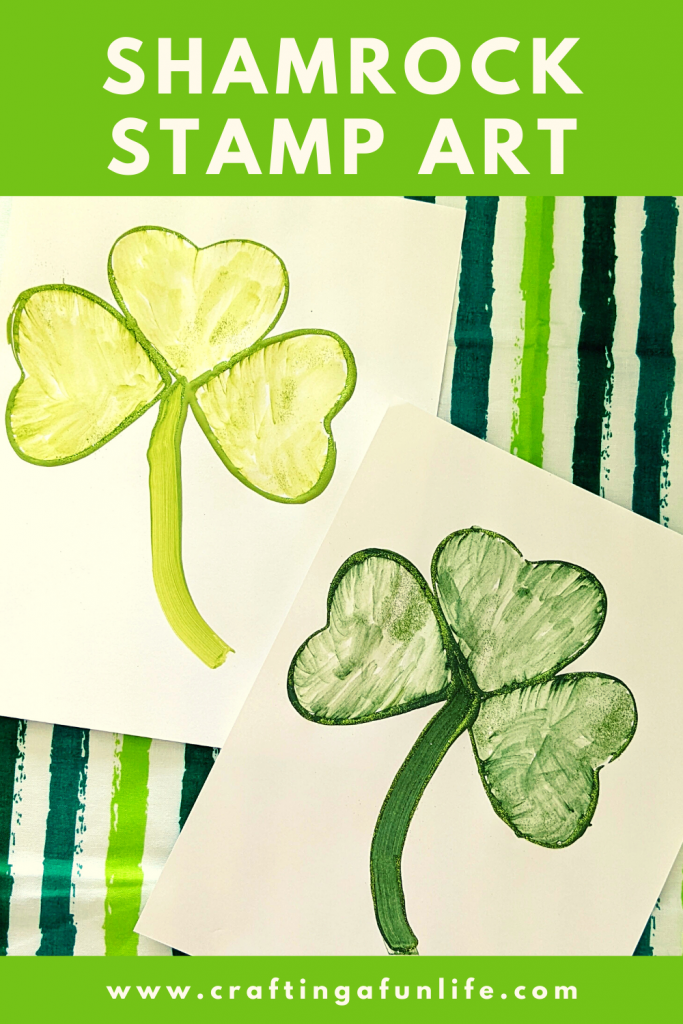
Using the KFB (Knitter's Front Loop) is the best way to create a double stitch, and it's a good idea to have a quick refresher before you begin your next project. While it's clever and easy to create three stitches with one stitch, it's not always straightforward. It requires a little bit of needle acrobatics, and you'll have to try it a few times before you get the hang of it. Here are some tips that will help you get started.
First, a circular needle is best. This will allow you to fit multiple stitches on the needle. Also, you won't have to join the yarn. If you don’t feel the need to join, you can slip the first stitch on the right needle and continue knitting the remainder of the row. This is an excellent trick for tight knitters. Keep 2 stitches in between the stitches that you are knitting, and slip the other stitch.
Next, you need to figure out a way to maximize the foundation stitch. The foundation stitch's front has a mixture of blue and green colors. This stitch is made up of two pieces. One is the twisted top and one is the untwisted bottom. You can slip the first stitch in a purlwise fashion while knitting the rest. This may sound like a pain to do, but it's actually quite easy.

Next, you need to figure out how to increase the M1 (horizontal bars). This is a smart way to add one row of stitches, but be careful not to slip it off your needle. It's a small trick, but it's the small stuff that makes the biggest difference.
Then, you'll want to find a clever way to make the M2 (horizontal bar and M1 increase). This one, unlike the previous trick, involves knitting two stitches from the same foundation. This trick is not quite as impressive as M1 increases, but it's still a great way of getting your feet started.
The KFB (Knitter’s front loop), is the most exciting of all stitches. This trick is best used when you're trying to create a double stitch, but it can also be used for an M1 increase. You'll need to do a little acrobatics to get it to work, but if you get the hang of it, you'll have a great time knitting.
The best part of this technique is that it doesn't require a bunch of yarnovers or complicated rows. This method is also much easier on your wallet. For this technique, you only need to purchase a couple of balls yarn. If you do it the traditional way, you'll end up spending a lot more.

Although you need to be careful not slide the knit stitch from your needle, the KFB is a smart way to create a stitch as useful and beautiful as possible.
FAQ
What is a hobby that kids can do?
A hobby for kids is any activity they like to do as part of their normal daily routine. They might like to draw pictures, build things, paint, write stories, play with toys, read books, watch TV, listen to music, play computer games, ride bikes, skateboard, swim, climb trees, run around outside, play football, basketball, volleyball, rugby, cricket, baseball, soccer, hockey, dodgeball, rounders, tag, hide and seek, hopscotch, marbles, jump rope, hopscotch and many others.
Many parents worry about their children getting into trouble if they have the freedom to do what they want. However, this is not always true. If your child is safe and doesn't cause harm to themselves or anyone else, they won't get into trouble.
It's important for people to understand that just because they like something doesn't necessarily mean they'll choose it all the time. They might decide to draw instead of write if they enjoy drawing pictures.
There are many different hobbies, so it is up to you which one you love the most.
What are the most popular hobbies right now?
Popularity is not always a positive thing. It can be used to justify mediocrity. Most people don’t have the time to pursue any hobbies they desire. They are too busy trying to make ends meet. So what should you do if you don't have much free time? You could also start your own business.
It's not easy. You will need to overcome many obstacles before your idea can become a reality.
So if you're looking for something more exciting than running a business, you should consider pursuing a hobby.
Hobbies do not have to be limited to creative pursuits. There are many different kinds of hobbies available. Some of these include:
-
Gardening
-
Cooking
-
Photography
-
Reading
What are collection hobby?
The most popular collections are books, movies, music, comics, video games, sports equipment, toys, etc.
Also, you can collect anything: stamps, coin to cars, dolls to action figure to model kit to figurines to art materials to tools to cook utensils and jewelry to watches to jewellery to appliances to clothes to furniture or antiques to...
I think you get it.
Why do we have hobbies?
Hobbies can be a part of your life because they provide you with time to unwind, recharge, think creatively as well as the chance to exercise, socialize, and relax. Hobbies offer opportunities to develop new skills as well as life-long interests.
Hobbies can help us find meaning and purpose.
They can be a great way of spending time without having to do anything else.
They are also very entertaining!
If you don't have time for a hobby, then you probably don't have time for anything else either.
You have many choices. Maybe you should consider starting a hobby.
What are some ideas for hobbies?
Hobby Ideas that are great for people who enjoy teaching others.
Hobbies can allow you to be creative and have fun while learning.
There are many different types of hobbies, but they all have similar characteristics. These hobbies are often enjoyable and require minimal effort.
These involve working with others.
Although you might not consider yourself a teacher, there are likely things you can do to help others learn.
If you are looking to become more creative in your daily life, you might consider starting a hobby that allows you to share your talents with others.
Where can I find free resources to learn more about hobbies?
There are many websites dedicated to helping people discover new hobbies.
Here are some of our favorite:
www.trythisathome.com - This site provides a list of over 100 different hobbies. This site also contains information on how you can get started with each of them.
www.hobbyfinders.org - This site offers a database of thousands of activities that you can search by interest, skill level, location, and more.
www.indiebazaar.co.uk - IndieBazaar is an online marketplace designed specifically for independent artists and musicians. You will find hundreds of products that range from artwork to music gear on the site.
www.pinterest.com/explore/hobbies - Pinterest is a social media network that lets users "pin" images they find interesting onto their boards. Users can use boards to organize their favorite things into specific categories.
www.reddit.com/r/Hobbies: Reddit, another social media platform, allows users to post links to articles and videos. Voting allows users to vote for the most valuable posts.
Statistics
- In comparison, men in the “no humor” condition were refused 84.6% of the time and were only accepted 15.4% of the time. (time.com)
- Almost 80% of people claim to have no hobby. (hobbylark.com)
- Studies show that just six minutes of reading can reduce stress levels by 60 percent. (oberlo.com)
- This 100% accurate personality-analyzing hobby quiz discovers your passion based on your characteristics. (quizexpo.com)
- I am 100% biologically a woman (discover.hubpages.com)
External Links
How To
How to start gardening
Gardening is one the oldest forms. It requires patience, persistence and determination. It is important to choose the right location for your garden. This could be on a large piece of land or in your backyard. Next, select the kind of plants that are most appealing to you. Are you more fond of flowers or vegetables? Some people love to grow herbs, while others enjoy raising animals like rabbits. Before you decide on the type of crops you want to plant, it is important to consider the space available. If you live somewhere that has cold winters, it might be a good idea to grow berries or fruits.
After choosing what you want to plant you need to prepare your soil. Your plants' success or failure will depend on the soil they are placed in. A good soil has organic matter which helps to feed the roots of your plants. Organic matter includes leaves, twigs (grass clippings), manure, compost, and manure. After you have prepared your soil you must add nutrients. You might need different amounts, depending on the species of plants that you want to grow. An online fertilizer calculator can help you calculate these values. There are many fertilizers available so be sure to know what you are purchasing.
After you have prepared the soil and added nutrients, it is time to wait for your seeds germination. This can take anywhere from two weeks to three months depending on where you live and how warm it is. Once the seeds have sprouted you will need to water them often. Problems can arise if you water your plants too frequently or too little. Ensure you give your plants enough water at regular intervals and avoid overwatering. Overwatering can cause root rot or fungal diseases. When watering your plants, remember that most plants require less water during the warm summer months than in winter. Also, remember that certain plants need to dry out after watered. For example, tomatoes need to stay slightly moist but not wet. Soggy soil is not good for them. After flowers are finished, plants must go dormant. Plants go dormant when they stop producing new growth and instead store energy for next year's harvest. Dormancy is when the plant stops sending signals back to its roots for food production. During this period, plants continue to store energy. Plants will soon die if they are exposed to too much or too cold temperatures.
You may be limited in what plants you can grow if you live in an urban area. Concrete sidewalks, roads and buildings are common in urban areas. They block sunlight from reaching the ground. Concrete absorbs light, preventing the soil underneath from getting adequate sun exposure. Many plants can't survive in urban environments due to lack of sunlight. There are still plants that thrive in urban environments. Many trees, shrubs, perennials, and other plants can adapt to urban life. Many annuals can also be grown indoors in container gardens. You can grow fresh greenery year-round in containers.
Now that you have decided where to place your garden, chosen what you will grow, and prepared your soil, you are ready to plant!